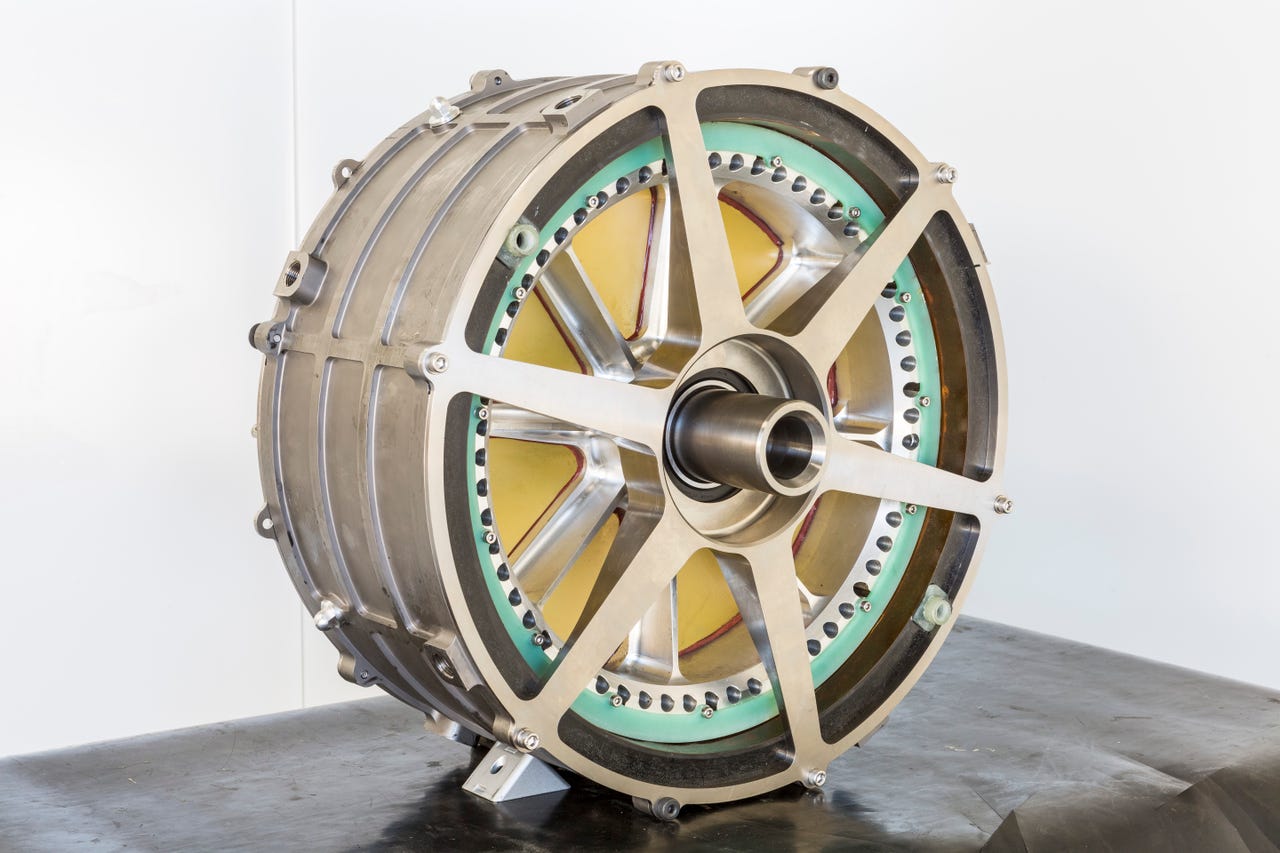The long road to an electric airplane motor


Redmond-based magniX, an electric propulsion company working on an emissions free airplane engine, today announced successful tests of its 350 horsepower all-electric motor. The engine was mounted on a Cessna 'Iron Bird'. The testing set out to demonstrate that the company's all-electric motors are nearing commercial viability.
It's been a long road for electric aviation, which is still a few years from becoming a commercial reality. But the environmental and economic incentives are high, and the race is underway to bring the electric vehicle revolution into the sky.
Airplane emissions account for about 4 percent of world greenhouse gas emissions, according to the European Commission. The EC's Flightpath 2050 guidelines set goals of "zero-emission ground maneuvering, a 90 percent reduction of NOx, 75 percent lower in-flight CO2 emissions, and a 65 percent decrease of noise emissions of flying aircraft by the year 2050" as compared with year 2000 levels. Electric airplane engines are the most viable way to achieve those goals.
Operating costs are also expected to plummet when airplanes go electric. Fuel accounts for 30 to 50 percent of an airline's operating costs. A price increase of just one penny per gallon equates to about $200 million spent by airlines in the U.S. on fuel per year.
During a record-setting electric flight, a University of Stuttgart plane called e-Genius used a fifth of the energy of a comparable fuel-powered plane at a significant reduction in cost. Over the course of 62 miles, the 25 kilowatts burned by e-Genius came at a diminutive energy cost of a little over $3 dollars.
Those savings could open up new "middle mile" routes, which are currently not cost-effective for airlines. That means more travel options and cheaper air freight.
With all the benefits, electric flight would be seem like a no brainer. But technical challenges have hampered development and adoption.
The problem, like most challenges in mechanical engineering, is one of power and weight. Modern batteries don't have a power-to-weight ratio that makes electric air travel practical. As an oft-repeated rule of thumb, energy density in batteries has been rising at a rate of 5-8 percent per year (for practical purposes the rate is probably closer to 2-3 percent). At present, 1000 pounds of jet fuel gives you about 14 times more power than 1000 pounds of batteries.
The stopgap solution will be hybrid power. Airbus and a Boeing backed company called Zunum Aero are currently working on hybrid aircraft engines. But an all-electric aircraft with niche commercial applications could be on tarmacs well ahead of 2030, the timeline many cite for the dawn of practical electric aviation.
On the heels of its successful tests, magniX estimates its technology will make commercial flights up to 1,000 miles possible by 2024. All-electric flights of up to 500 miles could be online as early as 2022. Those figures apply to smaller aircraft that can accommodate a few passengers.
In fall 2019, magniX will debut a new 750HP engine, which it will pair with a Cessna 208 Caravan. In most configurations, that plane accommodates about six passengers not including pilots.